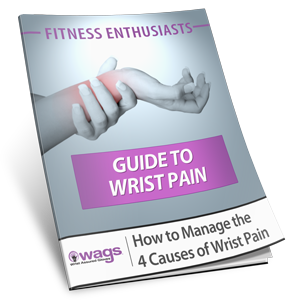Carpal Tunnel Syndrome (CTS) is caused by pressure on your median nerve. Your carpal tunnel is on the palm side of your hand and is a narrow passageway that the median nerve travels through surrounded by bones and ligaments. When your median nerve gets compressed at the wrist you’ll have symptoms such as swelling, numbness, pain, tingling and hand / arm weakness. This occurs in your thumb, index and middle fingers primarily but the hand, wrist and arm might become weak. Often you’ll feel symptoms of CTS first at night especially if you curl your wrists down when you sleep.
How painful is Carpal Tunnel Syndrome? It can be very painful and sometimes causes unusual sensations. There are 3 stages of carpal tunnel, Mild, Moderate, and Severe. Mild is when you intermittently feel symptoms. Moderate is when the symptoms become more constant and the tingling and numbness might travel up the wrist and arm. You might notice symptoms while holding a steering wheel, phone, or may wake you from sleep. If left untreated and it progressively worsens to Severe it can lead to permanent damage of the median nerve. You’ll likely experience constant symptoms and atrophy or weakness of the muscles connected to the median nerve. Due to weakness and numbness finger dexerity becomes poor and dropping objects common. Because the nerve is injured and no longer sending signals to the brain, the tingling sensation might go away.
What causes Carpal Tunnel Syndrome? Many times, there is no single cause. The anatomy of the wrist is a factor if you have tiny wrists and a narrow tunnel. Women are 3 times more likely to get CTS then men. A wrist fracture or dislocation can narrow the carpal tunnel and irritate the nerve. Some health problems are associated with it such as the swelling and inflammation caused by rheumatoid arthritis. Work related to repetitive hand motions or long term exposure to vibrating tools or work that requires constant flexing of the wrist may create harmful pressure on the median nerve, can contribute to carpal tunnel syndrome. Being obese is a risk factor. Fluid retention common during pregnancy and menopause can increase the tension on the median nerve.
What can you do about it? When you notice symtpoms don’t ignore them, but do the following things to try to avoid ending up with severe CTS. When symptoms are mild to moderate you can minimize the stress on the hands and wrists with these methods:
-Look your schedule and devise short, frequent breaks to gently stretch and bend hands, wrists and arms. Two minutes every hour or at the least twice a day.
-Alternate tasks when possible. This is especially important if you use equipment that vibrates or if you to exert a great amount of force. Even a few minutes each hour can make a difference.
-Shake out your hands often, open and close your hands and move wrists around.
-Reduce your force and relax your grip. Hit the keys softly on keyboard or cash register. For prolonged handwriting, use a big pen with a soft grip adapter.
-Wear a night wrist splint especially if curl your wrist or your symptoms wake you at night.
-Keep your hands warm, particularly if you work in a cold environment.
-Alternate apply ice with a heating pad. Ice will reduce inflammation while the heat promotes healing.
-Avoid bending your wrist all the way up or down and try to keep a relaxed middle position.
-Keep your keyboard at elbow height or slightly lower.
-Focus on your posture – keep the shoulders back and down. Avoid rolling shoulders forward. This shortens the neck and shoulder muscles and can compress nerves in the neck which affects the wrists, fingers and hands, plus can cause neck pain.
-Make sure that your computer mouse is comfortable and doesn’t strain your wrist. Get an ergonomic one if needed.
-Take OTC Anti-Inflammatories, as needed.
Proper treatment usually relieves the tingling and numbness and restores wrist and hand function.
If you have severe CTS you’ll likely need surgery. The recovery from carpal tunnel surgery takes time – anywhere from several weeks to several months. If the nerve has been compressed for a long period of time, recovery may take even longer. Recovery involves splinting your wrist and getting occupational or physical therapy to strengthen and heal the wrist and hand.




